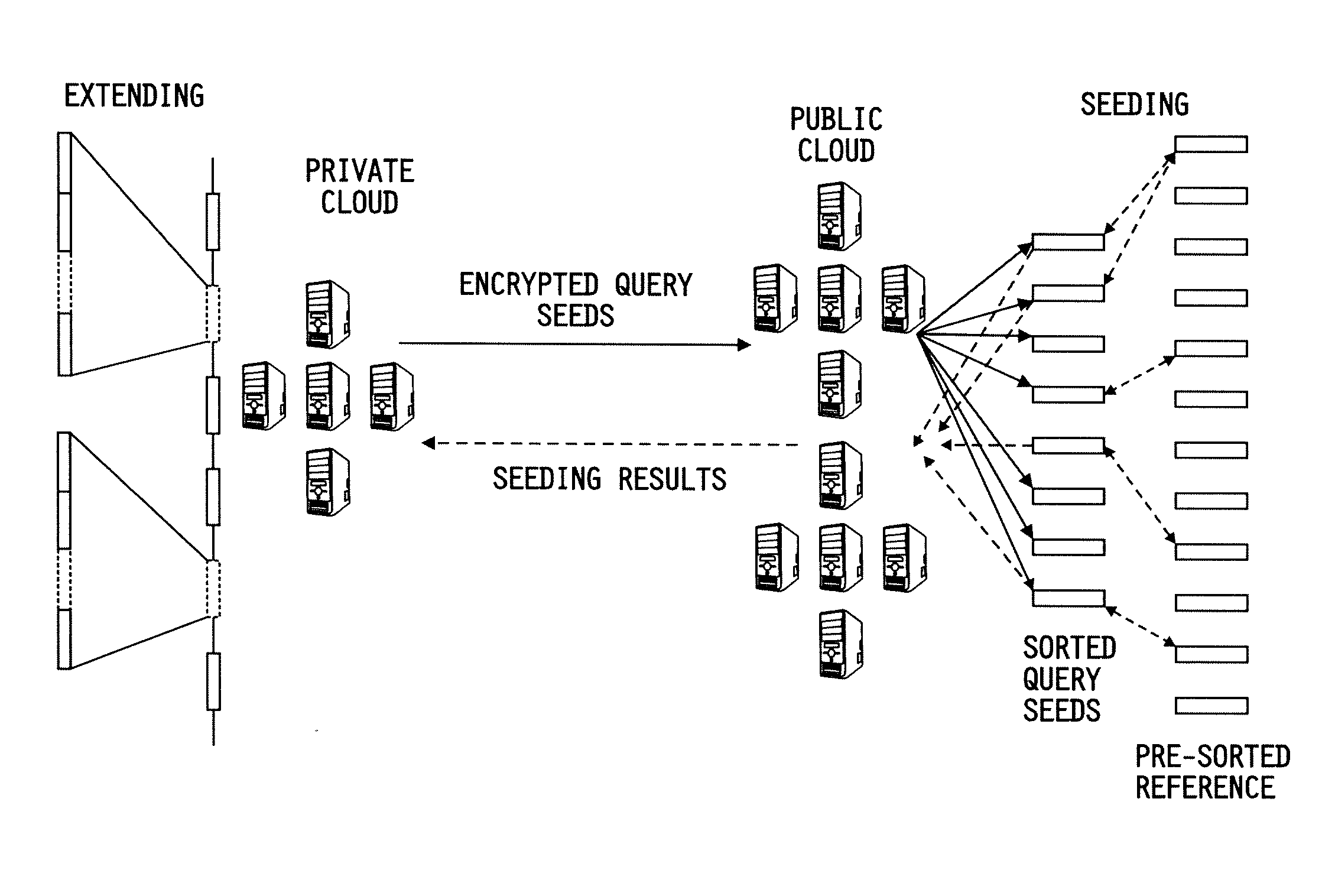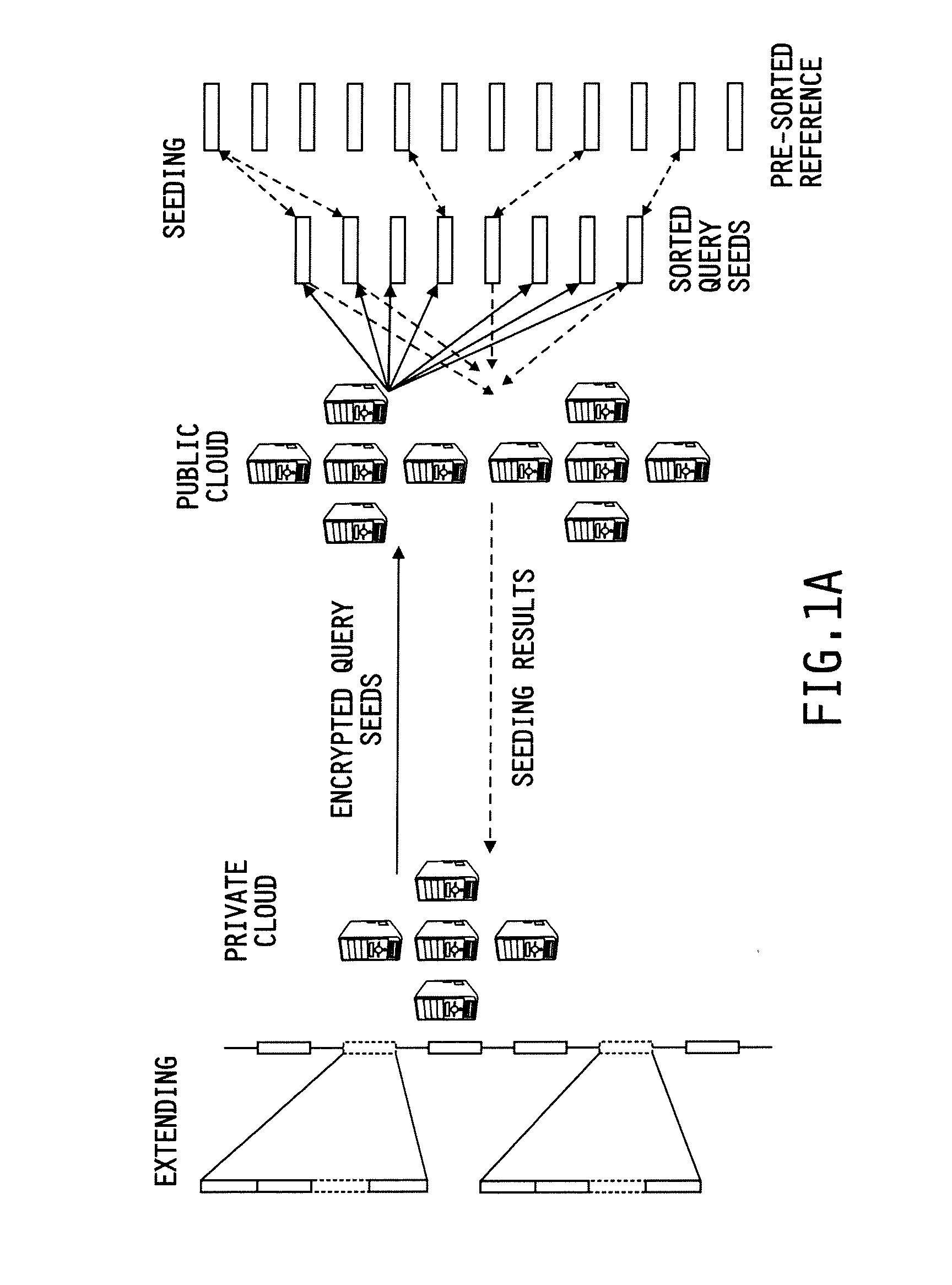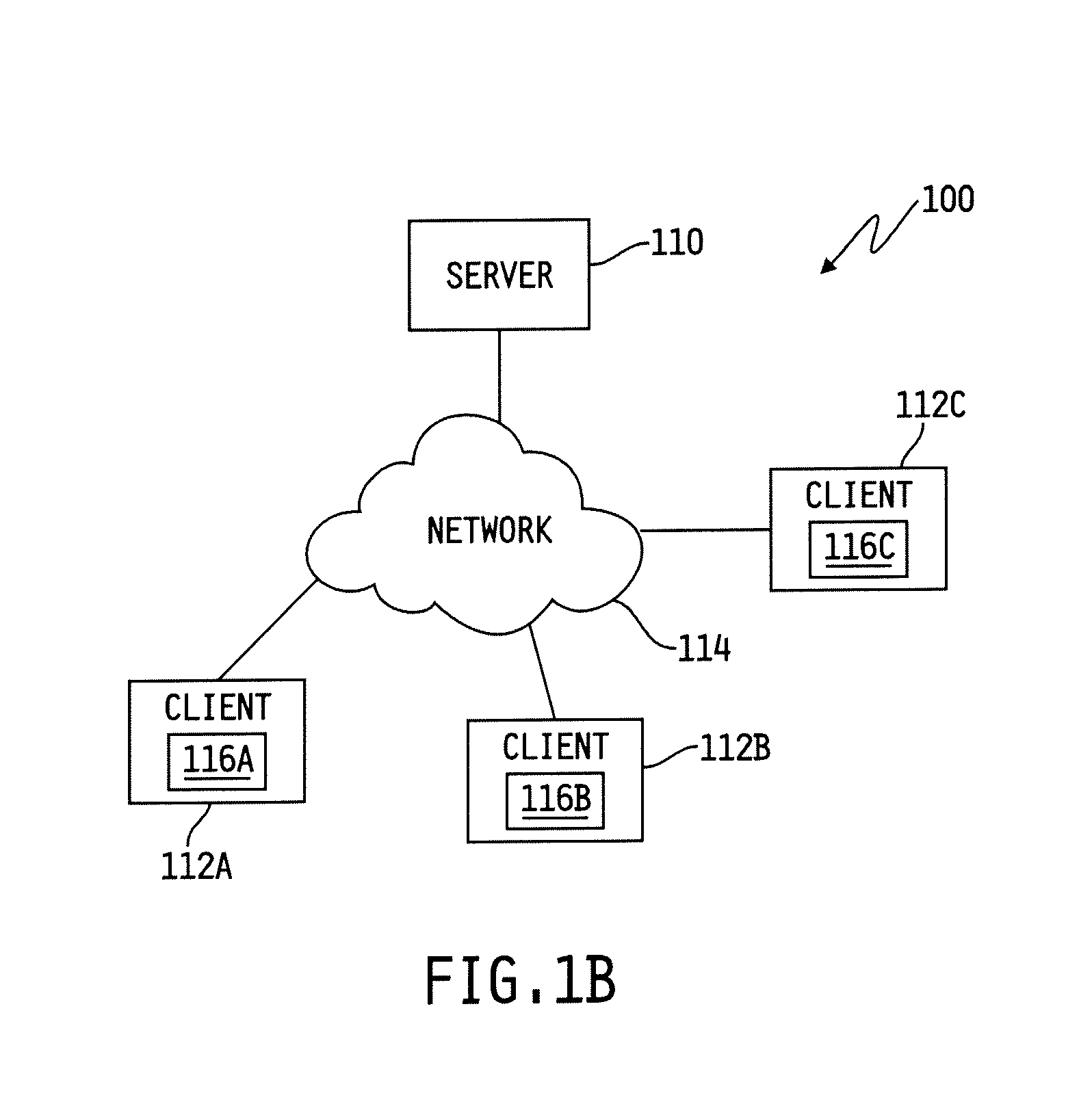Secure and scalable mapping of human sequencing reads on hybrid clouds
a hybrid cloud and read technology, applied in the field of dna read mapping, can solve the problems of difficult to meet the computing power within organizations, difficult to access health/life/disability insurance, and inability to access educational/employment opportunities, etc., and achieve the effect of small overall cost and strong privacy protection
- Summary
- Abstract
- Description
- Claims
- Application Information
AI Technical Summary
Benefits of technology
Problems solved by technology
Method used
Image
Examples
example # 1.1
1. Example #1.1
Security Analysis of the Disclosed System and Method
[0109]A security analysis of the disclosed system and method over the reference genome, particularly on the threat of frequency analysis, as the seeding happens over keyed-hash values for achieving a high performance was conducted. This risk, however, was found to be minimum in a whole genome analysis, due to the special structure of the human genome: most of its l-mers become unique when l grows over 20. A performance evaluation on the cloud platform with real human microbiome datasets further justified the efficacy of the disclosed approach, which mapped 10 million reads to the largest human chromosome within half an hour and outsourced over 98% of the mapping computation to the low-cost public cloud.
[0110]This evaluation was performed over a microbial filtering task. The sequences extracted from human microbes include the DNA information of their hosts, which, if not taken out, will not only contaminate the outcom...
example # 1.2
2. Example #1.2
[0114]When the distance was 3,450,561,196 and 69,789,044 24-mers were extracted from Chr1 and Chr22 respectively. Those 24-mers were first compressed to remove duplicated sequences. This operation was performed on the public cloud: using 20 nodes, the compression was done within 126 seconds for Chrl and 111 seconds for Chr22. Then, these unique 24-mers were hashed on the private cloud with SHA-1 using a 32-byte secret key. It took 323 seconds to work on Chr1 and 52 seconds on Chr22 using a single core. After that, these hashed reference sequences were moved back to the public cloud, which sorted them to prepare for the mapping task. As illustrated in Table 1, sorting brought in an overhead similar to that of compression. Note that all these operations only need to be performed once before the reference has to be replaced.
[0115]To work on the distance of 6, combinations of 12-mers which came from both chromosomes (39,649,379,528 from Chr1 and 6,141,430,...
example # 1.3
3. Example #1.3
Performance on the Public and Private Clouds
[0116]The study shows that seeding on the public cloud was extremely fast. The Hadoop-based prototype took less than 15 minutes to match all the seeds across the largest human chromosome, even when the edit distance reached 6, making 12-mer combinations about 88 times the size of the chromosome. Considering the 160 cores used, the consumption of total CPU time in such a computation is about 36 hours, which only costs about $3.60 on Amazon EC2. More specifically, sorting all the seeds or combined seeds took 111 to 210 seconds. A significant portion of such computational overheads, again, appear to come from Hadoop's management operations: for example, the time for sorting the combined seeds on Chr1 when the distance is 6 is almost identical to the time for the seeds when the distance is 3, though the former outnumber the latter by 6 to 1. This also happened to the merging step: when the distance is 3, it does not make much di...
PUM
 Login to View More
Login to View More Abstract
Description
Claims
Application Information
 Login to View More
Login to View More - R&D
- Intellectual Property
- Life Sciences
- Materials
- Tech Scout
- Unparalleled Data Quality
- Higher Quality Content
- 60% Fewer Hallucinations
Browse by: Latest US Patents, China's latest patents, Technical Efficacy Thesaurus, Application Domain, Technology Topic, Popular Technical Reports.
© 2025 PatSnap. All rights reserved.Legal|Privacy policy|Modern Slavery Act Transparency Statement|Sitemap|About US| Contact US: help@patsnap.com



